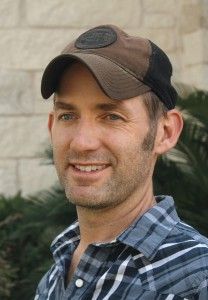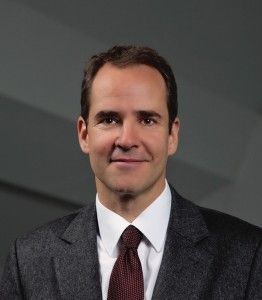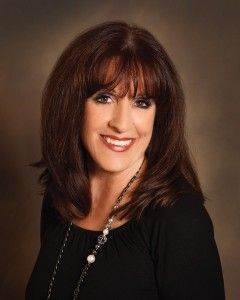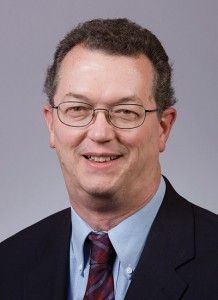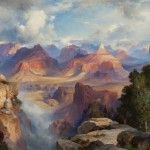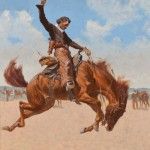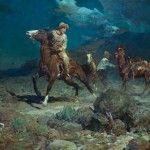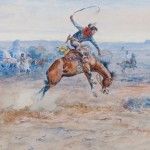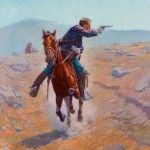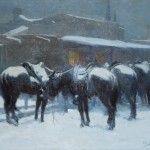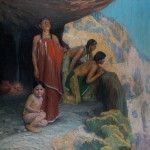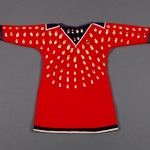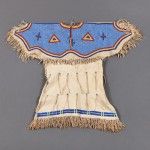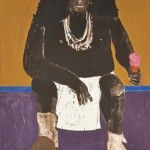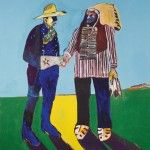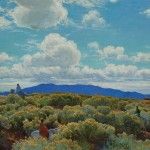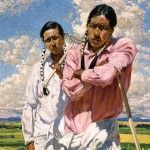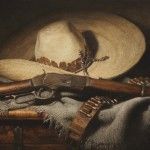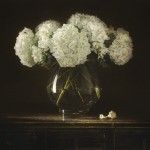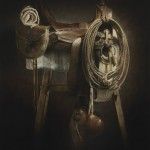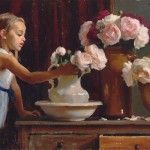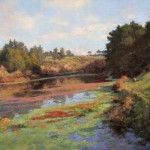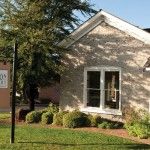This story was featured in the March 2016 issue of Southwest Art magazine. Get the Southwest Art March 2016 print issue or digital download now–then subscribe to Southwest Art and never miss another story.
For this year’s interview issue, we selected four people in the world of western art who intrigued us: an artist with skyrocketing prices and popularity, a gallery owner finding innovative ways to do business, and two museum leaders whose institutions are mounting buzz-worthy exhibitions. Listen in on the conversations as we talk to these noteworthy individuals.
Kyle Polzin
A young still-life painter reflects on his phenomenal success—and his hopes for the year ahead
Kyle Polzin has been enjoying achievements lately that typically come to artists at least a decade older than his 42 years. At last May’s inaugural Fredericksburg Art Auction, for example, his works sold for double, triple, or even quadruple their estimates, amazing attendees. At a recent show at Legacy Gallery, which exclusively represents the artist, Polzin’s in-demand still-life paintings were sold by drawing, and, reportedly, the draw boxes were stuffed with hundreds of names and bids from hopeful buyers. Yet the artist, who lives in Austin with his wife, Leigh, and their two young daughters, remains remarkably modest about such successes as he reflects on the surprises they brought and on what they mean for his future.
What have been some of your career highlights of the recent past? First of all, I’m going to talk a lot as “we” rather than “I,” because this is a joint business for my wife, Leigh, and me. She helps me manage my time and my ideas. Our biggest highlight so far was probably back in 2014, when my MYSTIC WARRIOR, a 70-by-30-inch painting of a war bonnet that had been estimated at $30,000 to $40,000, sold for $287,000. That was the first time we sold a piece in the six figures, and it really rocked our world and put us on the map. Since then, we’ve been setting records every year, with sales and sold-out shows and more people coming on board as collectors.
Another thing I’m proud of is that each year since 2010, I’ve been fortunate enough to be part of the Masters of the American West show at the Autry in Los Angeles. In 2012, 2013, and 2014, I received the Don B. Huntley Spirit of the West Award for the show’s best cowboy-themed painting, and last year, one of my works was selected to be sold in a special live auction along with pieces by Howard Terpning, Mian Situ, and Z.S. Liang.
With higher prices, do you ever worry about losing your collectors? It’s nice to put a piece out at auction and see it do really well. That just helps fuel the sale of my more reasonably priced pieces. But when I’m selling my work directly, not at an auction, we’re still trying to stay in the $15,000 to $25,000 range. We’re deliberately keeping it low so we keep our collector base. And when my pieces sell for high prices at resale auctions like Fredericksburg, I love to see my collectors do really well.
Why do you think your work strikes such a chord with collectors? The Dutch masters, like Rembrandt and Vermeer, inspire me a lot with their chiaroscuro—the way they handle light and dark—and I like to use that technique to take objects like old western saddlebags and spurs and romanticize them a bit in a way that captivates people. Many still-life artists seem to be going for trompe l’oeil, but I’m not trying to fool you into thinking that what I’m painting is real. I want to show the objects up close, so you can see the patina of the Old West, but in the kind of light and atmosphere that makes everything glow a little bit, like you’re recalling a really fond memory. That’s what I think is drawing people in, and all levels of collectors can identify with it.
What role has your exclusive relationship with Legacy Gallery played in your success? With their reputation and their locations in Scottsdale, Jackson Hole, and Bozeman, they’ve exposed me to so many more collectors. On top of that, working with them helped get me the attention of prestigious events like the Autry show and the Prix de West. Now that the stakes are much higher, being exclusive makes it easier to focus our attention on how we’re marketing and selling my paintings.
Considering everything that you’ve already achieved, what are your latest goals? I just want to continue to do my craft, continue to put my best work out there, and I hope people will continue to be excited by it. You never know what’s going to inspire you next until you see it. I want to keep the slate clear for new ideas, and I hope to do new pieces that will be different and will excite people. Ultimately, I want to take strategic risks that will bring something more to the table. With every painting I do, I want to hit something out of the park. —Interview by Norman Kolpas
Dr. Christoph Heinrich
The director of the Denver Art Museum on its recent emphasis on American art
Review the recent exhibitions roster at the Denver Art Museum, and you might conclude that the institution is focusing strongly on American art these days. Just concluded on January 17 was Super Indian, a groundbreaking thematic look at more than 40 rarely seen, large-scale works by Native American painter Fritz Scholder, exploring his figurative and pop influences. February 7 saw the closing of Wyeth: Andrew and Jamie in the Studio, exploring the common threads between the renowned father-and-son artists. And on view until April 24 is A Place in the Sun, which showcases the southwestern works of artists and friends Walter Ufer and E. Martin Hennings, who were members of the Taos Society of Artists. We talked with Dr. Christoph Heinrich, the museum’s director since 2010, about this notable emphasis on American artists.
How did these three American-themed exhibitions come about? Was there a coordinated effort to focus on American artists—or specifically on western American artists? As Denver can be considered the gateway to the real West, the Denver Art Museum is the right place to show art of the American West, which is not merely part of our exhibition program but also a strong focus in our collection. Very often, we’ll try to put works from our permanent collection in context with pieces loaned from other collections for special exhibitions that go in depth and take certain areas of art under the magnifying glass. Before these three shows, we’ve already had great exhibitions on other artists including Ernest L. Blumenschein, a founding member of the Taos Society of Artists; the great cowboy artist C.M. Russell; contemporary Colorado-based western artist William Matthews; and chromolithographs by the great 19th-century western landscape artist Thomas Moran.
It’s also important to note that our collection of American Indian art ranks among the best of the world, and we’ve always been very committed to keeping that collection current, so it isn’t viewed as remnants of a lost culture but as a reflection of a very vivid, active collection of contemporary art.
Are there any additional exhibitions coming up in 2016 or 2017 that will continue your focus on American art? Yes. We’re very excited about a show opening on June 12 on Women of Abstract Expressions. Even though that was the purely American movement of the late 1940s, ’50s, and ’60s, the names that come to mind are men—Pollock and Rothko and Newman. But when you dig a bit deeper you discover there were important women working in that movement, too, on the East and West Coasts. We’re highlighting six of them, including Elaine de Kooning, Lee Krasner, and Helen Frankenthaler.
In the summer, we’ll have a show called Rhythm and Roots, which looks at dance as reflected in the last 150 years of American art. There is a specific American approach to, and idea of, dance. We’ll look at its roots in such places as slavery and jazz. And we’ll have a second show on American Indian dance circles and their contribution to the idea of dance as a form of communication and a way of defining community.
Then, on November 13, we’re showing Star Wars and the Power of Costume. Star Wars is, of course, the big American mythology. We’ll be exploring the historical and mythological inspirations for the movies’ costumes and what they add to the narrative.
Why do you feel that it’s important right now to focus on American artists? Living here in Denver makes it very natural for us to reflect about the country, about what defines art as American, and about the different possibilities offered by being an artist in America. So American art on the whole, and not just western or American Indian art, is a big part of what we’re doing. All of these shows are part of a project over the last six years to show very different aspects of what can be summarized under the broader headline of American art.
For election year 2016, in fact, we were even flirting for a while with the idea of making it a purely American art year, offering a very solid presentation of different aspects of American art. Ultimately, however, it isn’t just about the now, nor is it just about American art. We’re certainly not an exclusively American museum like the Whitney in New York. So we have a Samurai armor exhibition opening on March 6, and we’ve had others on jewelry by Cartier or the fashions of Yves Saint-Laurent. We have always tried to live an encyclopedic art mission. —Interview by Norman Kolpas
Jane Bell Meyer
The owner of three Utah galleries talks about her success in a changing art environment
Jane Bell Meyer is the owner and director of three successful Utah galleries: The Mission Gallery and Authentique Gallery in St. George, and Illume Gallery of Fine Art in Salt Lake City. A former theater actor, singer, and interior designer, and a longtime art lover and collector, Meyer infuses her conversation with infectious enthusiasm that is reflected in every aspect of her business. One of her galleries’ most popular annual events is called Where in the World is Plein Air. Gallery and guest artists take videos of themselves creating plein-air paintings in locations across the globe; collectors watch the videos and purchase the resulting paintings online. This year’s event takes place June 8-10.
Talk a little about how the galleries got started. In 2005, a historic little house, tucked away in the trees on Main Street in St. George, came up for sale. I remodeled it and opened it as Authentique Gallery. I’ve collected art since I was about 20—I was in rock bands, and I used my gig money to buy art. As a collector I realized that in art towns, many galleries are gathered together. So when a building came up two doors down from our first gallery in 2006, The Mission Gallery was created, with totally different artists. By going into competition with myself, sales doubled in my first gallery! During the economic downturn, when other galleries were suffering, we upped the ante and filled our galleries with more well-known artists, whose work was going up in value every year. This brought in the serious collectors, who were interested not only in beauty but also in investment.
And the third gallery? Illume Gallery of Fine Art opened in September 2013. We began advertising a year in advance as a gallery for national artists and attracted some of the very best artists in the country.
What else makes your business work? You have to go outside the box now; you can’t wait for people to walk in the door. Many collectors are buying online or going to big shows to buy art. So we need to have other ideas, such as programs where we take maybe 10 or 15 paintings to a client’s home or to their office, so they can see what really works there. And, among many other ideas, we have private shows in our collectors’ homes. They invite three to five of their
favorite gallery artists, who attend and show their work.
How do you see the current state of the art market in Utah, and how do St. George and Salt Lake City compare? The market is difficult right now, as everyone who’s in the business knows. St. George is a little bit easier than Salt Lake. Less than 5 percent of sales in St. George come from full-time residents. Most purchases come from people with second homes, since the town is such a draw for conventions, golf tournaments, et cetera. So I get the same people coming in every year. And we have 10 years of stability in the same place.
How did Where in the World is Plein Air come about? A couple of years ago, as I saw the business change due to technology, I wondered what we could do. One night I actually woke up in the middle of the night: “I have an idea!” I wrote it down and sent it to my tech people. This is the third year, and the artists in our three galleries all have the opportunity to be involved and don’t have to be juried. Every year, even the past-juried artists have to be juried again.
Do the artists find it difficult to film themselves as they paint? A few do have difficulty until they get the hang of it. Most of the artists make it educational and entertaining along the way.
What is it about the event that makes it so popular and successful? Well, the collectors are excited to watch their favorite artists create in the actual environment. The artists are painting all over the world, and the paintings are immediately for sale online. It’s three days, and the artists make one piece every day. It’s fun for the artists because they don’t have to go anywhere; they can paint wherever they are.
What geographical range are the artists from? Last year we had artists from Australia, Great Britain, Italy, Canada, and every state in the U.S., including Alaska! —Interview by Gussie Fauntleroy
James Nottage
The chief curatorial officer of the Eiteljorg Museum on the gift of a major collection of western and American Indian art
As vice president and chief curatorial officer at the Eiteljorg Museum of American Indians and Western Art in Indianapolis, IN, James Nottage has had the privilege and pleasure of presiding over the museum’s processing of a major donation in 2015. The Kenneth S. “Bud” and Nancy
Adams Collection comprises 200 western paintings and some 400 Native American artifacts collected by the late Texas oilman and National Football League team owner. As Nottage and his staff prepare for an exhibition of important works from the collection, opening in November, he took time to talk with Southwest Art about the gift.
What’s the story behind the donation of the Adams collection? Parts of the collection were first exhibited here in 1993 with collections from alumni of Culver Academy [a boarding school in Culver, IN, which Adams attended.] Then in 2003, Eiteljorg CEO John Vanausdall and I visited with Bud Adams at his home and office in Houston. John communicated with Bud over the years and received a surprise phone call in the fall of 2014. Adams had died the previous year. His attorney advised us for the first time that the collection had been willed to the Eiteljorg. In the spring of 2015 our director of collections and I went to Houston and transferred the entire collection to Indianapolis.
What stands out for you about the collection’s western paintings? In the broad category of western classics, along with paintings by Russell, Remington, and Moran, there are three major Charles Schreyvogels, four major Frank Tenney Johnsons, and one Albert Bierstadt. Among the illustrators, there are one each by N.C. Wyeth and W.H.D. Koerner. The Koerner was a Saturday Evening Post painting, and the Wyeth was featured on the cover of two magazines in 1915. I think one of the nicest bodies of work in the collection is by members of the Taos Society of Artists. There are two major paintings by E.I. Couse, a fabulous painting by Oscar Berninghaus; there are a couple of Blumenscheins, five by Bert Phillips, one Ufer, a couple of Hennings paintings, and four Joseph Sharps. And some Santa Fe artists: Sheldon Parsons, Fremont Ellis, and Leon Gaspard. There’s also a nice mix of contemporary western painters: Howard Terpning, Melvin Warren, Wilson Hurley, and others.
Any individual pieces that stand out for you? It could be a long list. Certainly the Remington, an oil done in about 1893 called A BUCK-JUMPER. It’s a key image of his that relates to his developing the iconic image of the cowboy on the wild bucking bronco. And I would mention the Thomas Moran. It’s a 1917 Grand Canyon oil, not huge, 20 by 30, but it’s exquisitely painted.
Of the important western artists, are any of them now represented at the Eiteljorg for the first time? Only one, and that’s Karl Wimar. It’s an oil painting of a bison bull, done in 1861. His work is extraordinarily uncommon, so this is a nice addition for us.
What about the Native American side of the collection? The strength is in the Plains material. There’s a strong representation of Crow beadwork including a phenomenal cradleboard; a wonderful grouping of Osage ribbon work—blankets, skirts, leggings; and some very nice beaded Blackfoot clothing and a great Upper Missouri quilled war shirt. There’s a grouping of baskets from the Southwest, Northwest Coast, and a bit of California. The pottery is almost entirely Pueblo, and there are many Navajo weavings. Quite a range of materials.
Did you know Bud Adams personally? I only knew him slightly from our visit—a very interesting man. I think his passion for collecting really came from his family history. He was an enrolled member of the Cherokee tribe, and his family goes back to the early days of both Texas and Oklahoma.
What’s most exciting to you about the magnitude of this acquisition? Well, as you know, we’re doing the exhibit and a book in the fall, which will feature about 60 paintings and 60 or 70 Native American objects, truly the highlights of the collection. In the broader picture, with the growth and maturation of the museum, the addition of this collection is going to make possible something we’ve been working toward: In the spring of 2018, we’ll completely rehang and reinstall our painting galleries. And we are working toward a complete reinstallation of the Native American galleries as well. —Interview by Gussie Fauntleroy
Featured in the March 2016 issue of Southwest Art magazine. Get the Southwest Art March 2016 print issue or digital download now–then subscribe to Southwest Art and never miss another story.
- Eiteljorg Museum, Thomas Moran, The Grand Canyon, oil, 20 x 30.
- Eiteljorg Museum, Frederic Remington, A Buck-Jumper, oil, 35 x 23.
- Eiteljorg Museum, Frank Tenney Johnson, A Fresh Mount, 1932, oil, 36 x 46.
- Eiteljorg Museum, Charles M. Russell, Bucking Bronco, watercolor, 14 x 22.3
- Eiteljorg Museum, Charles Schreyvogel, The Messenger, oil, 34 x 25.
- Eiteljorg Museum, Oscar Berninghaus, Night of the Dance, oil, 30 x 40.
- Eiteljorg Museum, Eanger Irving Couse, The Sun Worshippers, oil, 60 x 60.
- Eiteljorg Museum, Crow girl’s dress
- Eiteljorg Museum, Lakota girl’s dress
- Eiteljorg Museum, Selection of moccasins from the collection
- Denver Art Museum, Fritz Scholder, Super Indian No. 2, oil, 90 x 60.
- Denver Art Museum, Fritz Scholder, Matinee Cowboy and Indian, oil, 80 x 68.
- Denver Art Museum, E. Martin Hennings, Through the Greasewood, oil, 45 x 43.
- Denver Art Museum, Walter Ufer, Me and Him, oil, 40 x 36.
- Kyle Polzin, El Caballero, oil, 20 x 32.
- Kyle Polzin, Ivory Flourish, oil, 28 x 30.
- Kyle Polzin, Trailblazer, oil, 44 x 35.
- Authentique Gallery, Michael Malm, Pink Peonies, oil, 24 x 36.
- The Mission Gallery, Jim McVicker, Like Loleta, oil, 24 x 36.
- The Mission Gallery, St. George, UT.
MORE RESOURCES FOR ART COLLECTORS & ENTHUSIASTS
• Subscribe to Southwest Art magazine
• Learn how to paint & how to draw with downloads, books, videos & more from North Light Shop
• Sign up for your Southwest Art email newsletter & download a FREE ebook






